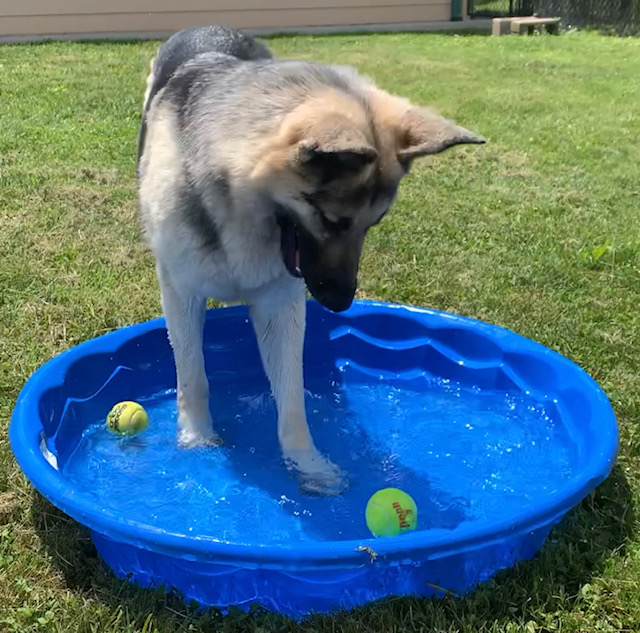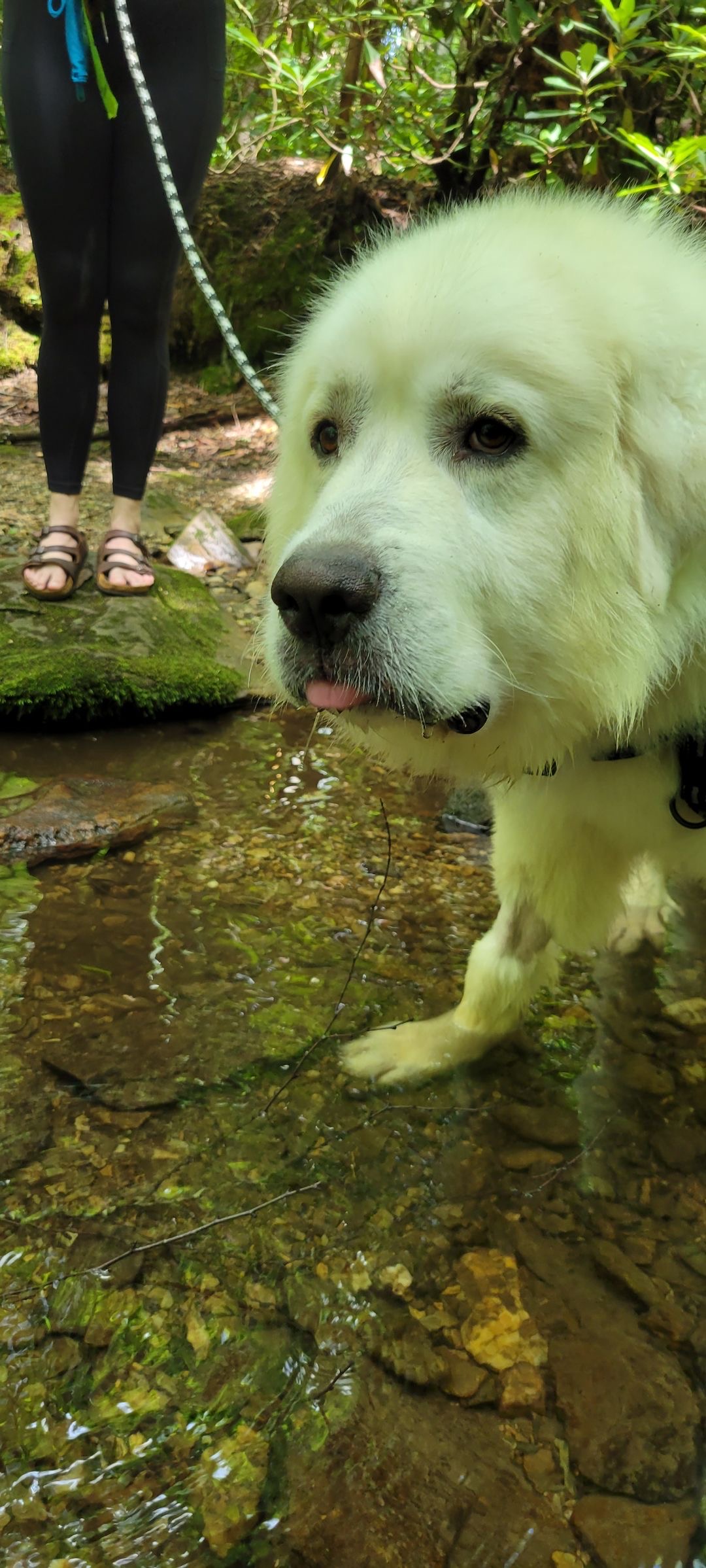
July 13th, 2022

Pet Safety Water Tips
Hot summers mean cooling off in water. If you’re enjoying the summertime alongside some furry friends, it’s important to know how to keep them safe while having fun. Thankfully, the ASPCA Animal Poison Control Center (APCC) has the information that you need to know.
- Bring Drinking Water
Water play is a particularly effective way to beat the heat, but be sure to take plenty of fresh, potable water with you. Lapping up pool water or water found outdoors could create a hazard for your pets.
Pool water contains chlorine and algicides to make the water suitable for swimming. These chemicals are usually greatly diluted in the pool itself and will only result in stomach upset if large amounts are consumed. But the undiluted pool chemicals (algicide, pool shock and chlorine tablets) are extremely corrosive, and if ingested will cause severe ulcers in the mouth, throat and esophagus. These can become life-threatening.
- Keep Your Poolside Products and Beverages Out of Paws’ Reach
Products we use to keep ourselves safe outdoors—specifically, sunscreens and bug sprays—don’t always work for our pets. Both products may contain chemicals that could be harmful to pets when ingested or applied on their skin. Don’t use any sunscreens or bug repellants on your pets unless they are specifically marked as safe for animals. When lounging outside or participating in outdoor activities, be sure to put your products away securely after use.
Also, if you’re enjoying a few alcoholic beverages by the pool, be sure to keep your drinks up and away from any curious noses and clean up any spills.
- Never Leave Your Pet Unattended by the Pool
Even if your pool is covered, pool covers themselves can be a safety hazard if your pet falls in and slips beneath the cover. If this were to happen, you pet could become disoriented, and can drown while trying to climb out. Consider a safety cover to prevent this hazard from leading to tragedy.
To further protect your pets, you could consider using pool alarms or pool turtles (a device that the pet wears on the collar that sounds an alarm when it gets wet) to protect your pet and alert you if they are in trouble.
- Avoid areas that appear to have Blue-green algae. Don't let drink from these areas has it could be toxic to your pet.
Alarming reports have recently surfaced of blue-green algae intoxications in pets. Many pet parents don’t realize the severity of the threat these toxins pose to animals, and it’s easy to overlook. During this recent spike in blue-green algae cases, we want to make sure you have everything you need to know to keep pets safe.
What Is Blue-Green Algae and Why Is It Dangerous?
Blue-green algae (cyanobacteria) is most likely to thrive in bodies of fresh water when the weather is warm (over 75 degrees) and sunny. Algae intoxications happen more during the summer because weather conditions promote the growth of cyanobacteria. These organisms are incredibly toxic and are known to cause poisoning in dogs, cats, livestock, wildlife, birds, fish and even humans.
How to Spot It
Water containing toxic algae blooms will often have the appearance of a pea-green paint or will appear as if there’s slime on the surface.
If certain wind conditions are present, the film will often concentrate along the shoreline in areas where animals may drink or swim.
Symptoms of Intoxication
Dogs can develop poisoning when they drink from, or even simply swim in, contaminated water sources. If blue-green algae is ingested, it can cause severe neurologic or liver damage.
Signs of blue-green algae toxicity include:
- Seizures
- Panting
- Excessive drooling
- Respiratory failure
- Diarrhea
- Disorientation
- Vomiting
- Liver failure
- Ultimately death
If your dog begins to experience any of these symptoms, you should contact your veterinarian immediately.
- Stay Alert!
Prevention is key when it comes to any pet toxin. Don’t allow your pets to drink from stagnant ponds, lakes or other bodies of water that have bluish-green scum on the surface or around the edges.
Blue-green algae cells can also stick to a pet’s fur and be ingested when they clean themselves, so take caution before allowing your pet to jump into a body of water and be sure to rinse your pet thoroughly with fresh water after going for a dip.
Many public health departments test water frequently in areas that are known to have outbreaks and will post signs when there is a problem—so vigilance is also important.
Follow these few poolside safety tips to have a fun, safe and healthy summer!
If you suspect that your pet ingested something potentially toxic, please call your veterinarian or the ASPCA Animal Poison Control Center at (888) 426-4435 immediately.